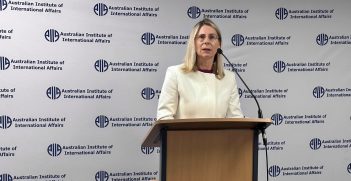“It’s you, not me”: China’s Subsidies and Global Trade Tensions

China’s extensive use of subsidies is a significant driver of global trade tensions, influencing market dynamics and prompting concerns about a potential “subsidy race” among nations. With more anti-dumping measures being taken out against the nation, China may be regquired to rethink its strategy or lose further trade market share among an increasingly skittish global economy.
A recent working paper published by the International Monetary Fund (IMF) found that subsidies made up 95 percent of all Chinese trade distortive policies between 2009 and 2022. For western observers and politicians who have long complained of the impact of Chinese subsidies on domestic producers, the report provides a degree of vindication. As China continues to file complaints with the WTO for other countries’ supposedly excessive tariff regimes, it raises a crucial question: what role does China’s subsidies play in global trade distortion? These frequent complaints may indicate a defensive posture in response to external pressures, but they reveal a concerning disconnect from the implications of its own subsidy program.
This ambiguity is most evident in industries China considers strategic, where 20 percent of sectors have received over 50 percent of subsidies, with key products such as batteries, solar panels, and electronic vehicles (EVs) among the most endowed. One may view this targeted approach to subsidies as geared towards a green transition, but it is equally possible that the purpose of subsidies is to outcompete and drive out foreign producers.
A case in point is the steel industry. China, the world’s largest steel producer, has been accused of flooding international markets with cheap steel, thanks to the wealth of government subsidies distorting market signals. Japan and South Korea are looking at anti-dumping actions, India has a variety of China-facing anti-dumping probes, including recently on steel, and the govenrment in Chile has imposed temporary anti-dumping tariffs of 25-34 percent to try to keep their steel makers afloat. China’s’ subsidy wave has made it the top net exporter of steel in the world—more than double the volume of Japan, which holds the number two spot.
Steel subsidies also highlight the downstream impacts on the exports of related products. For example, the IMF report found the increasing number of steel subsidies was correlated with a 3.5 percent increase in automotive exports. This suggests the actual impact of Chinese subsidies on trade is broader than it initially seems with the focus on subsidising strategic industries. One report in 2021 examining basic metals sector, for instance, found that an increase in one standard deviation of Chinese subsides interventions reduced exports in the other major economies by a very significant 0.17 percent. Upstream industries can also pass on the effect of the subsidies in the form of cheaper input costs, leading to oversupply in other industries. This effect is also present but less effective going from downstream industries to upstream.
China’s approach to subsidies, as the above indicates, raises many questions. But perhaps no more important than understanding what such distortion means for the long-term viability of domestic industries that do not benefit from similar support. The challenge, emphatically, has been downward pressure on the private sector, and non-strategic innovation. Meanwhile, household consumption has long been a weak point despite China’s rapid economic growth, and has been a key contributor to ongoing subsidies. With a mandated five percent GDP to be achieved, the government feels it is only via the outsized role of its manufacturing sector that China can maintain its artificial growth rates.
In response to claims by US and EU officials that Chinese subsidies have caused excess supply and increased export quantities, the IMF report finds there is on average “weak” evidence of this effect. That is not to say the oversupply argument has no backing. Particularly in the communications, plastic, metal products, and other industries, increased export supply was attributed to these subsidies.
In the case of automobiles and EVs, Beijing’s subsidies lowered both export prices and export quantities, likely due to retaliatory tariffs. The picture is therefore muddied by an uneven spread of subsidies and a scattered retaliatory response from trade partners—enacting protectionist policy in certain sectors but appearing to allow subsidised trade deficits in others.
The spillover effects of Chinese subsidies have disrupted global trade flows and other countries have reacted by enacting retaliatory measures and trade barriers. The consequences of these disruptions ultimately lead to less cooperation, domestication of industries for more resilience, and more scepticism towards trading partners. Chinese subsidies that contribute to the overall growth of Chinese firms can end up causing a subsidy race between major economic powers, leading to stifled innovation and harming global competition in the long term. China would claim that these retaliatory measures are coming from the West; mainly the US and the EU, with aims to hinder China’s growth by implementing unfair trade barriers. But the evidence suggests the complaints are much more global.
An example is Türkiye. On 8 October, China filed a WTO complaint after Türkiye slapped additional tariffs targeting Chinese EVs and commercial vehicles. This came on the back of a 40 percent tariff on all vehicles imported from China in July of this year. Turkiye’s biggest exports are machinery and transport equipment, out of which road vehicles cover 15 percent of total exports. Going as far back as 2021, a communiqué by Türkiye’s MoC discussed the possibility of decreased profitability of car engines due to Chinese imports and dumping practices.
As nations seek to counterbalance China’s extensive subsidy programs, they risk engaging in a cycle of competitive state support that could distort global trade even further. This scenario, rather than levelling the playing field, may exacerbate the inequalities that already exist, leading to an even more fragmented global economy. This is already being seen in national plans to reshore strategic industries such as semiconductors as well as plans for critical mineral collectives that ensure trusted supply chains.
While the strategy of imposing tariffs on Chinese-subsidised goods might offer temporary relief, history has shown that such actions can trigger trade wars, harming both consumers and industries. In the technology sector, where China’s state-backed industries around 5G and semiconductors dominate due to heavy government support, tariffs have led to price hikes and supply chain disruptions. The consequences—rising costs, retaliatory measures, and weakened global supply chains—underscore the risks associated with relying solely on this tactic.
A more promising path forward may lie in multilateral action by states to enhance the enforcement of trade rules. However, even this is no small feat. Achieving global consensus on such measures is complicated given China’s ability to wield significant influence in international institutions, such as the WTO, leaving the global community in a delicate balancing act, and perhaps more reliant on more restrictive groupings like the G7.
Leveraging regional trade agreements, such as the Comprehensive and Progressive Agreement for Trans-Pacific Partnership (CPTPP) or the Regional Comprehensive Economic Partnership (RCEP), to include provisions on subsidies could create a framework for more effective management. Such agreements would allow member states to establish clearer rules on state support, particularly for industries where China has a distinct advantage. However, the success of this strategy hinges on the willingness of member countries to prioritise collective interests over individual national gains. So far, there has been little movement in this area.
The international community stands at a crossroads, and the path forward for China will require more than addressing external pressures but also internal reflection on the causes of trade tensions. While the challenges posed by China’s subsidies are immense, they also present an opportunity for a coordinated global response that could restore fairness to international trade. The alternative—a fragmented, protectionist trade environment—would only worsen the issues we seek to resolve.
Nikki Trewin is Australian Outlook Assistant Editor Intern at the AIIA. She is in her final semester of her Bachelor of International Studies at RMIT University, Melbourne. Daiki Sato is the events and public engagement intern at the AIIA. He is an undergraduate student at the School of Asia and the Pacific at ANU. Adrian Lu is the book review coordinator and Australian Outlook Assistant Editor Intern at the AIIA. He is an undergraduate student currently studying Law / Politics Philosophy and Economics at ANU.
This article is published under a Creative Commons License and may be republished with attribution.





